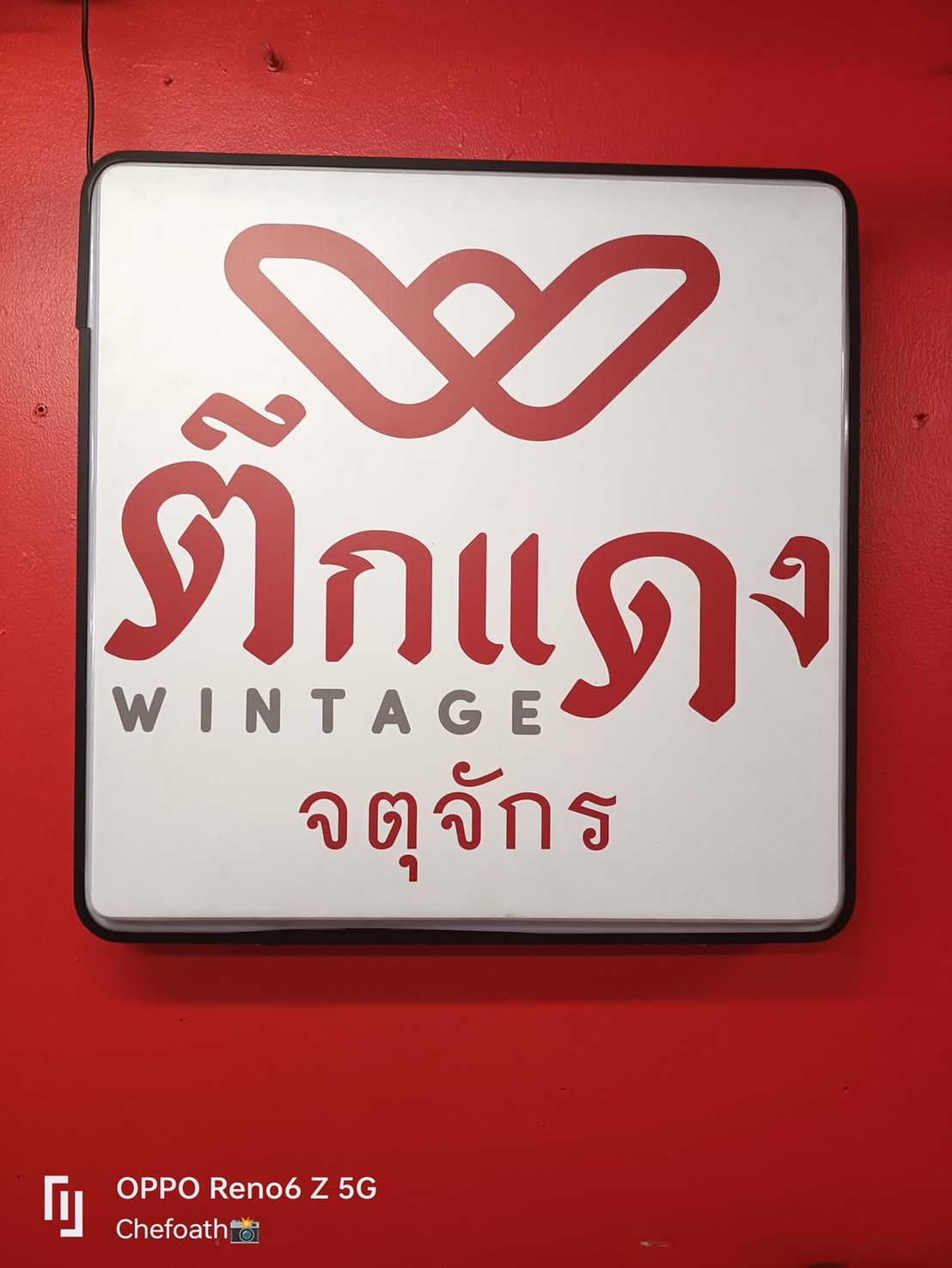0 ความคิดเห็น
0 การแบ่งปัน
179 มุมมอง
0 รีวิว

รายการ
ค้นพบผู้คนใหม่ๆ สร้างการเชื่อมต่อใหม่ๆ และรู้จักเพื่อนใหม่
- กรุณาเข้าสู่ระบบเพื่อกดถูกใจ แชร์ และแสดงความคิดเห็น!
- FENGSHUI DAILY
อัพเดตทุกวัน ที่นี่ที่เดียว
สีเสริมดวง เสริมความเฮง
ทิศมงคล เวลามงคล
อย่าลืมดูกัน เมื่อเริ่มวันใหม่
วันเสาร์ที่ 21 เดือนกันยายน พ.ศ.2567
___________________________________
FengshuiBizDesigner
ฮวงจุ้ย...ออกแบบได้
เช็คฮวงจุ้ยให้ธุรกิจ แอดเลย!! คลิก https://lin.ee/nyL0NuG
ติดต่อ : 066-095-4524 (จิม) , 081-625-2587(ด็อง)
.
.
#ดูดวงธุรกิจ #โลโก้ดี #ออกแบบโลโก้ #เช็คฮวงจุ้ยให้ธุรกิจ #ฮวงจุ้ย #พี่อ๋า #สมศักดิ์ #ชาคริตฐากูร
#FengshuiBiz #FengshuiBizDesignerFENGSHUI DAILY อัพเดตทุกวัน ที่นี่ที่เดียว สีเสริมดวง เสริมความเฮง ทิศมงคล เวลามงคล อย่าลืมดูกัน เมื่อเริ่มวันใหม่ วันเสาร์ที่ 21 เดือนกันยายน พ.ศ.2567 ___________________________________ FengshuiBizDesigner ฮวงจุ้ย...ออกแบบได้ เช็คฮวงจุ้ยให้ธุรกิจ แอดเลย!! คลิก https://lin.ee/nyL0NuG ติดต่อ : 066-095-4524 (จิม) , 081-625-2587(ด็อง) . . #ดูดวงธุรกิจ #โลโก้ดี #ออกแบบโลโก้ #เช็คฮวงจุ้ยให้ธุรกิจ #ฮวงจุ้ย #พี่อ๋า #สมศักดิ์ #ชาคริตฐากูร #FengshuiBiz #FengshuiBizDesigner0 ความคิดเห็น 0 การแบ่งปัน 218 มุมมอง 0 รีวิว1
- ลูกขอลาออก ถ้าแม่จะขอให้พาไปเดินป่าทุกๆวันสำคัญ-///-
○○○○○○○○○○○○○○○○○○○○○○○○○
☆12 สิงหาคม วันแม่
แม่ขอเดินป่า 12 กม.
○○○○○○○○○○○○○○○○○○○○○○○○○
■หุบเขาตีนไก่
》》หุบเขาลับๆ ในจังหวัดนครนายก พื้นที่ธรรมชาติอันอุดมสมบูรณ์ ซึ่งมีเส้นทาง ทางธรรมชาติ ให้เราได้ไปสัมผัส ถึง 3 เส้นทาง
■1. เขาหัวหมวก ระยะทาง ไป-กลับ ประมาณ 4 กิโลเมตร เป็นทางขึ้นเขาค่อนข้างชัน และลื่น เส้นทางบางช่วงจะมีเชือกสำหรับดึงขึ้น เมื่อมาถึงจะพบกับก้อนหินขนาดใหญ่ ที่มีก้อนหินก้อนเล็กตั้งอยู่ด้านบน ตั้งอยู่บริเวณริมหน้าผา
■2. ผานางดำ เป็นระยะทางที่ใกล้ที่สุด ไป-กลับ ประมาณ 3 กิโลเมตร ทางเดิน เดินง่ายที่สุดใน 3 เส้นทาง
■3. น้ำตกสลัดได ระยะทางไป-กลับ ประมาณ 5 กิโลเมตร เป็นทางเดินที่ค่อนข้างชันเช่นกัน แต่เดินง่ายกว่า ทางขึ้นเขาหัวหมวก
》》รวมทั้งหมด 12 กม.
●●●●●●●●●●●●●●●●●●●●
#มะนาวก้าวเดิน #กิจกรรมวันแม่ #วันแม่ #หุบเขาตีนไก่ #เขาหัวหมวก #12สิงหาคมวันแม่แม่ขอเดินป่า12กิโลเมตร #เดินป่านครนายก #ที่เที่ยวนครนายก #น้ำตกกะอาง #thaitimes #thaitimesมะนาวก้าวเดิน #thaitimesเที่ยวไทย #thaitimesmanowjourneyลูกขอลาออก ถ้าแม่จะขอให้พาไปเดินป่าทุกๆวันสำคัญ-///- ○○○○○○○○○○○○○○○○○○○○○○○○○ ☆12 สิงหาคม วันแม่ แม่ขอเดินป่า 12 กม. ○○○○○○○○○○○○○○○○○○○○○○○○○ ■หุบเขาตีนไก่ 》》หุบเขาลับๆ ในจังหวัดนครนายก พื้นที่ธรรมชาติอันอุดมสมบูรณ์ ซึ่งมีเส้นทาง ทางธรรมชาติ ให้เราได้ไปสัมผัส ถึง 3 เส้นทาง ■1. เขาหัวหมวก ระยะทาง ไป-กลับ ประมาณ 4 กิโลเมตร เป็นทางขึ้นเขาค่อนข้างชัน และลื่น เส้นทางบางช่วงจะมีเชือกสำหรับดึงขึ้น เมื่อมาถึงจะพบกับก้อนหินขนาดใหญ่ ที่มีก้อนหินก้อนเล็กตั้งอยู่ด้านบน ตั้งอยู่บริเวณริมหน้าผา ■2. ผานางดำ เป็นระยะทางที่ใกล้ที่สุด ไป-กลับ ประมาณ 3 กิโลเมตร ทางเดิน เดินง่ายที่สุดใน 3 เส้นทาง ■3. น้ำตกสลัดได ระยะทางไป-กลับ ประมาณ 5 กิโลเมตร เป็นทางเดินที่ค่อนข้างชันเช่นกัน แต่เดินง่ายกว่า ทางขึ้นเขาหัวหมวก 》》รวมทั้งหมด 12 กม. ●●●●●●●●●●●●●●●●●●●● #มะนาวก้าวเดิน #กิจกรรมวันแม่ #วันแม่ #หุบเขาตีนไก่ #เขาหัวหมวก #12สิงหาคมวันแม่แม่ขอเดินป่า12กิโลเมตร #เดินป่านครนายก #ที่เที่ยวนครนายก #น้ำตกกะอาง #thaitimes #thaitimesมะนาวก้าวเดิน #thaitimesเที่ยวไทย #thaitimesmanowjourney0 ความคิดเห็น 0 การแบ่งปัน 2932 มุมมอง 538 0 รีวิว1
- อรุณสวัสดิ์พี่น้องชาวไทยอรุณสวัสดิ์พี่น้องชาวไทย0 ความคิดเห็น 0 การแบ่งปัน 127 มุมมอง 0 รีวิว
- 0 ความคิดเห็น 0 การแบ่งปัน 56 มุมมอง 0 รีวิว
- 0 ความคิดเห็น 0 การแบ่งปัน 140 มุมมอง 0 รีวิว1

- รับทำตัวแป้งกระทงทอง. สั่งล่วงหน้าก่อน2-3วันรับทำตัวแป้งกระทงทอง. สั่งล่วงหน้าก่อน2-3วัน0 ความคิดเห็น 0 การแบ่งปัน 205 มุมมอง 0 รีวิว
- 0 ความคิดเห็น 0 การแบ่งปัน 128 มุมมอง 0 รีวิว
- รับสั่งทำตัวแป้งกระทงทองรับสั่งทำตัวแป้งกระทงทอง0 ความคิดเห็น 0 การแบ่งปัน 425 มุมมอง 55 0 รีวิว
- On the subject of brain energy...
In10 days, people can having foxtail Millet everyday instead of bread or rice, add Moringa powder and nutritional yeast... And the effect is goodOn the subject of brain energy...🙄 In10 days, people can having foxtail Millet everyday instead of bread or rice, add Moringa powder and nutritional yeast... And the effect is good😊0 ความคิดเห็น 0 การแบ่งปัน 168 มุมมอง 0 รีวิว1
- สนใจติดต่อสอบถามสนใจติดต่อสอบถาม0 ความคิดเห็น 0 การแบ่งปัน 190 มุมมอง 0 รีวิว
- เราเรียกเหตุการณ์ที่เกิดขึ้นในวันอังคารและวันพุธว่า เป็นการประกาศสงคราม, ศัตรูก้าวข้ามเส้นแดงทั้งหมด - ผู้นำฮิซบอลเลาะห์
.
We can call what happened on Tuesday and Wednesday a declaration of war, Enemy crossed all red lines - Hezbollah Leader
.
9:45 PM · Sep 19, 2024 · 138.4K Views
https://x.com/IranObserver0/status/1836778593973592503🚨 เราเรียกเหตุการณ์ที่เกิดขึ้นในวันอังคารและวันพุธว่า เป็นการประกาศสงคราม, ศัตรูก้าวข้ามเส้นแดงทั้งหมด - ผู้นำฮิซบอลเลาะห์ . 🚨 We can call what happened on Tuesday and Wednesday a declaration of war, Enemy crossed all red lines - Hezbollah Leader . 9:45 PM · Sep 19, 2024 · 138.4K Views https://x.com/IranObserver0/status/18367785939735925030 ความคิดเห็น 0 การแบ่งปัน 354 มุมมอง 0 รีวิว1
- 0 ความคิดเห็น 0 การแบ่งปัน 119 มุมมอง 0 รีวิว
- วันนี้เจอกันที่ร้านเชฟโอ๊ฒแอนทิค นะคับ
ที่ตึกแดงวินเทจ.....เจอกันนะวันนี้เจอกันที่ร้านเชฟโอ๊ฒแอนทิค นะคับ ที่ตึกแดงวินเทจ.....เจอกันนะ0 ความคิดเห็น 0 การแบ่งปัน 326 มุมมอง 0 รีวิว - ❗️นาสรัลเลาะห์: 'ศัตรูประกาศเป้าหมายอย่างเป็นทางการว่า, "จะพาผู้ตั้งถิ่นฐานกลับคืนสู่ภาคเหนือ", เรารับคำท้าแล้ว; คุณจะไม่สามารถกลับไปภาคเหนือได้'
'อันที่จริง, เราจะขับไล่ชาวอิสราเอลออกจากบ้านเรือนของพวกเขามากขึ้น'
'เรา หวังว่า อิสราเอลจะเข้าสู่เลบานอน, เรากำลังรอรถถังของพวกเขาทั้งวันทั้งคืน, "เราขอต้อนรับ!"
"เราถือว่าการเข้าสู่ดินแดนเลบานอนครั้งใดก็ตาม เป็นโอกาสทางประวัติศาสตร์ที่จะส่งผลกระทบอย่างใหญ่หลวงต่อการสู้รบ"
.
❗️Nasrallah: 'The enemy declares as its official goal, "to return the settlers to the North", we have accepted the challenge; you will not be able to return to the North'
'In fact, we will displace more Israelis from their homes'
'we HOPE Israel enters Lebanon, we are waiting for their tanks day and night, we say "welcome!"
"We consider any entry into Lebanese territory a historic opportunity that will have major effects on the battle"
.
10:06 PM · Sep 19, 2024 · 306.8K Views
https://x.com/IranObserver0/status/1836783867941794102❗️นาสรัลเลาะห์: 'ศัตรูประกาศเป้าหมายอย่างเป็นทางการว่า, "จะพาผู้ตั้งถิ่นฐานกลับคืนสู่ภาคเหนือ", เรารับคำท้าแล้ว; คุณจะไม่สามารถกลับไปภาคเหนือได้' 'อันที่จริง, เราจะขับไล่ชาวอิสราเอลออกจากบ้านเรือนของพวกเขามากขึ้น' 'เรา หวังว่า อิสราเอลจะเข้าสู่เลบานอน, เรากำลังรอรถถังของพวกเขาทั้งวันทั้งคืน, "เราขอต้อนรับ!" "เราถือว่าการเข้าสู่ดินแดนเลบานอนครั้งใดก็ตาม เป็นโอกาสทางประวัติศาสตร์ที่จะส่งผลกระทบอย่างใหญ่หลวงต่อการสู้รบ" . ❗️Nasrallah: 'The enemy declares as its official goal, "to return the settlers to the North", we have accepted the challenge; you will not be able to return to the North' 'In fact, we will displace more Israelis from their homes' 'we HOPE Israel enters Lebanon, we are waiting for their tanks day and night, we say "welcome!" "We consider any entry into Lebanese territory a historic opportunity that will have major effects on the battle" . 10:06 PM · Sep 19, 2024 · 306.8K Views https://x.com/IranObserver0/status/18367838679417941020 ความคิดเห็น 0 การแบ่งปัน 531 มุมมอง 0 รีวิว1
- 0 ความคิดเห็น 0 การแบ่งปัน 128 มุมมอง 0 รีวิว
- 0 ความคิดเห็น 0 การแบ่งปัน 159 มุมมอง 0 รีวิว
- 0 ความคิดเห็น 0 การแบ่งปัน 52 มุมมอง 0 รีวิว
- อิสราเอลโจมตีทางอากาศในเลบานอนเกือบ ๑๐๐ ครั้งในเวลาไม่ถึง ๒ ชั่วโมง ซึ่งไม่เคยเกิดขึ้นมาก่อน
สงครามใหญ่กำลังจะเกิดขึ้น ดูเหมือนว่า
.
⚡️JUST IN
Nearly 100 air strikes have been carried out by Israel on Lebanon in less than two hours which is unprecedented
A big war is on the way it seems
.
1:49 AM · Sep 20, 2024 · 253.7K Views
https://x.com/IranObserver0/status/1836840017895051410อิสราเอลโจมตีทางอากาศในเลบานอนเกือบ ๑๐๐ ครั้งในเวลาไม่ถึง ๒ ชั่วโมง ซึ่งไม่เคยเกิดขึ้นมาก่อน สงครามใหญ่กำลังจะเกิดขึ้น ดูเหมือนว่า . ⚡️JUST IN Nearly 100 air strikes have been carried out by Israel on Lebanon in less than two hours which is unprecedented A big war is on the way it seems . 1:49 AM · Sep 20, 2024 · 253.7K Views https://x.com/IranObserver0/status/18368400178950514100 ความคิดเห็น 0 การแบ่งปัน 214 มุมมอง 0 รีวิว1
- Dried mango is a delicious and nutritious snack that is loaded with essential vitamins and minerals. Here are some of the nutritional benefits of dried mango:
1. Rich in fiber: Dried mango is a good source of dietary fiber, which helps to keep your digestive system healthy and reduces the risk of constipation.
2. High in antioxidants: Dried mango contains high levels of antioxidants, such as polyphenols and carotenoids, which help to protect your cells against damage from free radicals.
3. Good source of vitamins: Dried mango is a rich source of vitamins A, C, and E, which are essential for maintaining healthy skin, eyes, and immune system.
4. Contains important minerals: Dried mango also contains important minerals such as potassium, iron, and calcium, which help to maintain healthy bones and muscles.
5. Boosts energy levels: Dried mango is a great source of natural sugars and carbohydrates, which can provide a quick energy boost when you need it.
มะม่วงกวนที่ทำกันเองน่ะเอามาทำวิตามินซีดื่มได้ด้วยนะ..Dried mango is a delicious and nutritious snack that is loaded with essential vitamins and minerals. Here are some of the nutritional benefits of dried mango: 1. Rich in fiber: Dried mango is a good source of dietary fiber, which helps to keep your digestive system healthy and reduces the risk of constipation. 2. High in antioxidants: Dried mango contains high levels of antioxidants, such as polyphenols and carotenoids, which help to protect your cells against damage from free radicals. 3. Good source of vitamins: Dried mango is a rich source of vitamins A, C, and E, which are essential for maintaining healthy skin, eyes, and immune system. 4. Contains important minerals: Dried mango also contains important minerals such as potassium, iron, and calcium, which help to maintain healthy bones and muscles. 5. Boosts energy levels: Dried mango is a great source of natural sugars and carbohydrates, which can provide a quick energy boost when you need it. มะม่วงกวนที่ทำกันเองน่ะเอามาทำวิตามินซีดื่มได้ด้วยนะ..0 ความคิดเห็น 0 การแบ่งปัน 441 มุมมอง 0 รีวิว1
- 0 ความคิดเห็น 0 การแบ่งปัน 53 มุมมอง 0 รีวิว
- กองทัพเรือเตรียมพร้อมเต็มที่ รับพระราชพิธีเสด็จฯ ถวายผ้าพระกฐินทางชลมารค
กองทัพเรือได้ดำเนินการเตรียมความพร้อมอย่างเต็มที่ เพื่อรับพระราชพิธีเสด็จพระราชดำเนินถวายผ้าพระกฐินโดยขบวนพยุหยาตราทางชลมารค เนื่องในโอกาสพระราชพิธีมหามงคลเฉลิมพระชนมพรรษา ๖ รอบ ๒๘ กรกฎาคม ๒๕๖๗ ณ วัดอรุณราชวรารามราชวรมหาวิหาร ในวันที่ ๒๗ ตุลาคม ๒๕๖๗
#ขบวนพยุหยาตราทางชลมารคอันยิ่งใหญ่
ขบวนพยุหยาตราทางชลมารคในครั้งนี้ จะประกอบด้วยเรือพระราชพิธีทั้งหมด ๕๒ ลำ จัดเป็น ๕ ริ้ว ความยาวรวม ๑,๒๐๐เมตร กว้าง ๙๐ เมตร โดยมีกำลังพลประจำเรือรวม ๒,๒๐๐ นาย ทุกหน่วยงานที่เกี่ยวข้องต่างร่วมแรงร่วมใจกัน เพื่อให้การจัดพระราชพิธีครั้งนี้เป็นไปอย่างสมพระเกียรติ
#กรมศิลปากรบูรณะเรือพระราชพิธี
กรมศิลปากรได้ดำเนินการอนุรักษ์และบูรณะเรือพระราชพิธีทั้ง ๕๒ ลำ ซึ่งถือเป็นโบราณวัตถุอันทรงคุณค่า โดยมีการลงรักปิดทอง ประดับกระจก ด้วยฝีมือช่างจากสำนักช่างสิบหมู่ เพื่อให้เรือแต่ละลำคงความงดงามและทรงคุณค่าตามแบบศิลปะดั้งเดิม
#กองทัพเรือฝึกซ้อมฝีพาย
กองทัพเรือได้ดำเนินการฝึกซ้อมฝีพายเรือพระราชพิธีอย่างเข้มข้น เพื่อให้การพายเรือเป็นไปอย่างพร้อมเพรียงและสง่างาม อีกทั้งยังคงไว้ซึ่งท่วงท่าตามโบราณราชประเพณี โดยมีการนำเทคนิคสมัยใหม่มาปรับใช้เพื่อเพิ่มความสวยงามและความแม่นยำในการพายเรือ
เรือพระที่นั่งสำคัญ ๔ ลำ
* เรือพระที่นั่งสุพรรณหงส์: เรือพระที่นั่งชั้นสูงสุด โขนเรือเป็นรูปหงส์ สร้างในสมัยรัชกาลที่ ๕ ใช้เป็นที่ประทับของพระมหากษัตริย์และพระบรมราชินี
* เรือพระที่นั่งอเนกชาติภุชงค์: เรือพระที่นั่งรอง โขนเรือลงรักปิดทองลายรูปงูตัวเล็ก ๆ จำนวนมาก สร้างในสมัยรัชกาลที่ ๕ ใช้เป็นที่ประทับเปลื้องเครื่องหรือเปลื้องพระชฎามหากฐินของพระบาทสมเด็จพระเจ้าอยู่หัว
* เรือพระที่นั่งอนันตนาคราช: หัวเรือจำหลักรูปพญานาค ๗ เศียร สร้างในสมัยรัชกาลที่ ๖ ใช้เป็นที่ประดิษฐานพระพุทธรูปสำคัญ หรือผ้าพระกฐิน
* เรือพระที่นั่งนารายณ์ทรงสุบรรณ รัชกาลที่ ๙: โขนเรือจำหลักรูปพระวิษณุทรงครุฑ สร้างขึ้นใหม่เพื่อถวายในหลวงรัชกาลที่ ๙ โดยปกติแล้วใช้เป็นที่ประดิษฐานพระพุทธรูปสำคัญ หรือผ้าพระกฐิน
เรือพระราชพิธีอื่นๆ
* เรือรูปสัตว์: มีโขนเรือเป็นรูปสัตว์ต่างๆ เช่น เรืออสุรวายุภักษ์ (รูปยักษ์), เรือครุฑเหินเห็จ (รูปครุฑ), เรือกระบี่ปราบเมืองมาร (รูปขุนกระบี่), เรือเอกชัยเหินหาว (รูปจระเข้หรือเหรา)
* เรือดั้ง: เรือที่มีลักษณะเป็นเรือยาว หัวเรือและท้ายเรือโค้งงอนขึ้น ประดับลวดลายสวยงาม
* เรือแซง: เรือที่มีลักษณะคล้ายเรือดั้ง แต่มีขนาดเล็กกว่า ใช้สำหรับพายนำหน้าขบวนเรือพระที่นั่ง
สืบสานประเพณีอันทรงคุณค่า
การจัดขบวนพยุหยาตราทางชลมารคในครั้งนี้ นอกจากจะเป็นการเฉลิมพระเกียรติพระบาทสมเด็จพระเจ้าอยู่หัวแล้ว ยังเป็นการสืบสานและอนุรักษ์มรดกทางวัฒนธรรมอันล้ำค่าของชาติให้คงอยู่สืบไป
ความภาคภูมิใจของคนไทยทั้งชาติ
พระราชพิธีเสด็จพระราชดำเนินถวายผ้าพระกฐินโดยขบวนพยุหยาตราทางชลมารคในครั้งนี้ นับเป็นความภาคภูมิใจของคนไทยทั้งชาติ ที่จะได้ร่วมเป็นส่วนหนึ่งของพระราชพิธีอันทรงเกียรติและงดงามตระการตา ซึ่งจะถูกจารึกไว้ในประวัติศาสตร์ชาติไทยสืบไป
เกร็ดความรู้เพิ่มเติม
ขบวนพยุหยาตราเพชรพวงทางชลมารค ในรัชสมัยสมเด็จพระนารายณ์มหาราชจัดขบวนเป็น ๕ ตอน
๑. ขบวนนอกหน้าประกอบด้วย เรือพิฆาต ๓ คู่ เรือแซ ๕ คู่ เรือชัย ๑๐ คู่ เรือรูปสัตว์ ๒ คู่
และมีเรือรูปสัตว์อีก ๑ คู่ เป็นเรือประตูหน้าชั้นนอก คั่นขบวนนอกหน้ากับขบวนในหน้า
๒. ขบวนในหน้า มีเรือรูปสัตว์ ๑๒ คู่ เรือเอกชัย ๒ คู่ เป็นเรือประตูหน้าชั้นในคั่นขบวนในหน้า
กับขบวนเรือพระราชยาน มีเรือโขมดยา [ขะ-โหฺมด-ยา] ซ้อนสายนอก ๕ คู่
๓. ขบวนเรือพระราชยาน มีเรือพระที่นั่ง ๕ ลำ เป็นเรือดั้งนำเรือพระที่นั่งศรีสมรรถชัย
[สี-สะ-หฺมัด-ถะ-ไช] ลำทรง และเรือพระที่นั่งไกรสรมุข [ไกฺร-สอ-ระ-มุก] ที่ใช้เป็นเรือพระที่นั่งรอง ขบวนเรือ
พระราชยานเป็นเรือพระที่นั่งกิ่งทั้งหมด
๔. ขบวนในหลัง แบ่งเป็น ๓ สาย สายกลางมีเรือพระที่นั่งเอกชัย ๒ ลำ สายในซ้ายและในขวา
เป็นเรือรูปสัตว์ ๒ คู่ อีก ๑ คู่ เป็นเรือประตูหลังชั้นนอก คั่นขบวนในหลังกับขบวนนอกหลัง
๕. ขบวนนอกหลัง ประกอบด้วยเรือแซ ๓ คู่ เรือพิฆาต ๒ คู่ และมีม้าแซงเดินริมตลิ่งอีกด้วย
ภายใน พิพิธภัณฑสถานแห่งชาติ เรือพระราชพิธี ยังเปิดให้ผู้ที่สนใจสามารถเข้าชมเรือพระราชพิธี ๔ ลำ และเรือรูปสัตว์ ๔ ลำ ณ พิพิธภัณฑสถานแห่งชาติเรือพระราชพิธี และชมการฝึกฝีพาย ณ บ่อเรือแผนกเรือราชพิธี กองเรือเล็ก กรมการขนส่งทหารเรือ ในวันราชการ ตั้งแต่วันนี้ ถึง ๒ กรกฎาคม ๒๕๖๗ ระหว่างเวลา ๐๙.๐๐ - ๑๖.๐๐ น. โดยไม่เสียค่าใช้จ่ายใด ๆ
อ้างอิง
๑. Phralan: https://phralan.in.th/Coronation/vocabdetail.php?id=844
๒. Thai PBS: https://www.thaipbs.or.th/news/content/341376กองทัพเรือเตรียมพร้อมเต็มที่ รับพระราชพิธีเสด็จฯ ถวายผ้าพระกฐินทางชลมารค กองทัพเรือได้ดำเนินการเตรียมความพร้อมอย่างเต็มที่ เพื่อรับพระราชพิธีเสด็จพระราชดำเนินถวายผ้าพระกฐินโดยขบวนพยุหยาตราทางชลมารค เนื่องในโอกาสพระราชพิธีมหามงคลเฉลิมพระชนมพรรษา ๖ รอบ ๒๘ กรกฎาคม ๒๕๖๗ ณ วัดอรุณราชวรารามราชวรมหาวิหาร ในวันที่ ๒๗ ตุลาคม ๒๕๖๗ #ขบวนพยุหยาตราทางชลมารคอันยิ่งใหญ่ ขบวนพยุหยาตราทางชลมารคในครั้งนี้ จะประกอบด้วยเรือพระราชพิธีทั้งหมด ๕๒ ลำ จัดเป็น ๕ ริ้ว ความยาวรวม ๑,๒๐๐เมตร กว้าง ๙๐ เมตร โดยมีกำลังพลประจำเรือรวม ๒,๒๐๐ นาย ทุกหน่วยงานที่เกี่ยวข้องต่างร่วมแรงร่วมใจกัน เพื่อให้การจัดพระราชพิธีครั้งนี้เป็นไปอย่างสมพระเกียรติ #กรมศิลปากรบูรณะเรือพระราชพิธี กรมศิลปากรได้ดำเนินการอนุรักษ์และบูรณะเรือพระราชพิธีทั้ง ๕๒ ลำ ซึ่งถือเป็นโบราณวัตถุอันทรงคุณค่า โดยมีการลงรักปิดทอง ประดับกระจก ด้วยฝีมือช่างจากสำนักช่างสิบหมู่ เพื่อให้เรือแต่ละลำคงความงดงามและทรงคุณค่าตามแบบศิลปะดั้งเดิม #กองทัพเรือฝึกซ้อมฝีพาย กองทัพเรือได้ดำเนินการฝึกซ้อมฝีพายเรือพระราชพิธีอย่างเข้มข้น เพื่อให้การพายเรือเป็นไปอย่างพร้อมเพรียงและสง่างาม อีกทั้งยังคงไว้ซึ่งท่วงท่าตามโบราณราชประเพณี โดยมีการนำเทคนิคสมัยใหม่มาปรับใช้เพื่อเพิ่มความสวยงามและความแม่นยำในการพายเรือ เรือพระที่นั่งสำคัญ ๔ ลำ * เรือพระที่นั่งสุพรรณหงส์: เรือพระที่นั่งชั้นสูงสุด โขนเรือเป็นรูปหงส์ สร้างในสมัยรัชกาลที่ ๕ ใช้เป็นที่ประทับของพระมหากษัตริย์และพระบรมราชินี * เรือพระที่นั่งอเนกชาติภุชงค์: เรือพระที่นั่งรอง โขนเรือลงรักปิดทองลายรูปงูตัวเล็ก ๆ จำนวนมาก สร้างในสมัยรัชกาลที่ ๕ ใช้เป็นที่ประทับเปลื้องเครื่องหรือเปลื้องพระชฎามหากฐินของพระบาทสมเด็จพระเจ้าอยู่หัว * เรือพระที่นั่งอนันตนาคราช: หัวเรือจำหลักรูปพญานาค ๗ เศียร สร้างในสมัยรัชกาลที่ ๖ ใช้เป็นที่ประดิษฐานพระพุทธรูปสำคัญ หรือผ้าพระกฐิน * เรือพระที่นั่งนารายณ์ทรงสุบรรณ รัชกาลที่ ๙: โขนเรือจำหลักรูปพระวิษณุทรงครุฑ สร้างขึ้นใหม่เพื่อถวายในหลวงรัชกาลที่ ๙ โดยปกติแล้วใช้เป็นที่ประดิษฐานพระพุทธรูปสำคัญ หรือผ้าพระกฐิน เรือพระราชพิธีอื่นๆ * เรือรูปสัตว์: มีโขนเรือเป็นรูปสัตว์ต่างๆ เช่น เรืออสุรวายุภักษ์ (รูปยักษ์), เรือครุฑเหินเห็จ (รูปครุฑ), เรือกระบี่ปราบเมืองมาร (รูปขุนกระบี่), เรือเอกชัยเหินหาว (รูปจระเข้หรือเหรา) * เรือดั้ง: เรือที่มีลักษณะเป็นเรือยาว หัวเรือและท้ายเรือโค้งงอนขึ้น ประดับลวดลายสวยงาม * เรือแซง: เรือที่มีลักษณะคล้ายเรือดั้ง แต่มีขนาดเล็กกว่า ใช้สำหรับพายนำหน้าขบวนเรือพระที่นั่ง สืบสานประเพณีอันทรงคุณค่า การจัดขบวนพยุหยาตราทางชลมารคในครั้งนี้ นอกจากจะเป็นการเฉลิมพระเกียรติพระบาทสมเด็จพระเจ้าอยู่หัวแล้ว ยังเป็นการสืบสานและอนุรักษ์มรดกทางวัฒนธรรมอันล้ำค่าของชาติให้คงอยู่สืบไป ความภาคภูมิใจของคนไทยทั้งชาติ พระราชพิธีเสด็จพระราชดำเนินถวายผ้าพระกฐินโดยขบวนพยุหยาตราทางชลมารคในครั้งนี้ นับเป็นความภาคภูมิใจของคนไทยทั้งชาติ ที่จะได้ร่วมเป็นส่วนหนึ่งของพระราชพิธีอันทรงเกียรติและงดงามตระการตา ซึ่งจะถูกจารึกไว้ในประวัติศาสตร์ชาติไทยสืบไป เกร็ดความรู้เพิ่มเติม ขบวนพยุหยาตราเพชรพวงทางชลมารค ในรัชสมัยสมเด็จพระนารายณ์มหาราชจัดขบวนเป็น ๕ ตอน ๑. ขบวนนอกหน้าประกอบด้วย เรือพิฆาต ๓ คู่ เรือแซ ๕ คู่ เรือชัย ๑๐ คู่ เรือรูปสัตว์ ๒ คู่ และมีเรือรูปสัตว์อีก ๑ คู่ เป็นเรือประตูหน้าชั้นนอก คั่นขบวนนอกหน้ากับขบวนในหน้า ๒. ขบวนในหน้า มีเรือรูปสัตว์ ๑๒ คู่ เรือเอกชัย ๒ คู่ เป็นเรือประตูหน้าชั้นในคั่นขบวนในหน้า กับขบวนเรือพระราชยาน มีเรือโขมดยา [ขะ-โหฺมด-ยา] ซ้อนสายนอก ๕ คู่ ๓. ขบวนเรือพระราชยาน มีเรือพระที่นั่ง ๕ ลำ เป็นเรือดั้งนำเรือพระที่นั่งศรีสมรรถชัย [สี-สะ-หฺมัด-ถะ-ไช] ลำทรง และเรือพระที่นั่งไกรสรมุข [ไกฺร-สอ-ระ-มุก] ที่ใช้เป็นเรือพระที่นั่งรอง ขบวนเรือ พระราชยานเป็นเรือพระที่นั่งกิ่งทั้งหมด ๔. ขบวนในหลัง แบ่งเป็น ๓ สาย สายกลางมีเรือพระที่นั่งเอกชัย ๒ ลำ สายในซ้ายและในขวา เป็นเรือรูปสัตว์ ๒ คู่ อีก ๑ คู่ เป็นเรือประตูหลังชั้นนอก คั่นขบวนในหลังกับขบวนนอกหลัง ๕. ขบวนนอกหลัง ประกอบด้วยเรือแซ ๓ คู่ เรือพิฆาต ๒ คู่ และมีม้าแซงเดินริมตลิ่งอีกด้วย ภายใน พิพิธภัณฑสถานแห่งชาติ เรือพระราชพิธี ยังเปิดให้ผู้ที่สนใจสามารถเข้าชมเรือพระราชพิธี ๔ ลำ และเรือรูปสัตว์ ๔ ลำ ณ พิพิธภัณฑสถานแห่งชาติเรือพระราชพิธี และชมการฝึกฝีพาย ณ บ่อเรือแผนกเรือราชพิธี กองเรือเล็ก กรมการขนส่งทหารเรือ ในวันราชการ ตั้งแต่วันนี้ ถึง ๒ กรกฎาคม ๒๕๖๗ ระหว่างเวลา ๐๙.๐๐ - ๑๖.๐๐ น. โดยไม่เสียค่าใช้จ่ายใด ๆ อ้างอิง ๑. Phralan: https://phralan.in.th/Coronation/vocabdetail.php?id=844 ๒. Thai PBS: https://www.thaipbs.or.th/news/content/3413760 ความคิดเห็น 1 การแบ่งปัน 2837 มุมมอง 0 รีวิว 2
2
- 0 ความคิดเห็น 0 การแบ่งปัน 172 มุมมอง 0 รีวิว
- 0 ความคิดเห็น 0 การแบ่งปัน 88 มุมมอง 0 รีวิว
- 0 ความคิดเห็น 0 การแบ่งปัน 157 มุมมอง 0 รีวิว



















